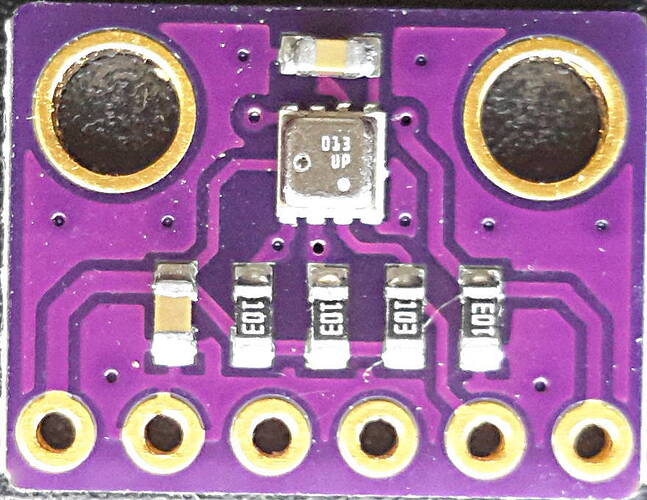Moving on. I implemented an extra function in the bme280 module to read all data at once. It also reads the chip registers in burst mode. The timing looks like this now (still at 160MHz)
108us tmr read
33992us init found bme280
5845us QFE=939.736 Temp=25.27
494us QNH=1009.511
4802us Humidity=31.583% Temp=25.27
468us dew_point=7.22
331us Altitude=600.00
2876us T=25.27 QFE=939.736 QNH=1009.511 H=31.583%
5828us QFE=939.748 Temp=25.26
258us QNH=1009.524
4798us Humidity=31.605% Temp=25.26
470us dew_point=7.22
450us Altitude=600.00
2876us T=25.26 QFE=939.748 QNH=1009.524 H=31.605%
The last line in a block is the new function. As can be seen, it is much faster than the others.
The test program was modified accordingly
local alt=600 -- altitude of the measurement place
local s
local function read_it()
print("")
s=tmr.now()
QFE, T = bme280.baro()
s=tmr.now()-s
if nil == QFE then
print("no baro")
return
end
print(string.format("%5dus QFE=%d.%03d Temp=%d.%02d", s, QFE/1000, QFE%1000, T/100, T%100))
-- convert measure air pressure to sea level pressure
s=tmr.now()
QNH = bme280.qfe2qnh(QFE, alt)
s=tmr.now()-s
print(string.format("%5dus QNH=%d.%03d", s, QNH/1000, QNH%1000))
s=tmr.now()
H, T = bme280.humi()
s=tmr.now()-s
print(string.format("%5dus Humidity=%d.%03d%% Temp=%d.%02d", s, H/1000, H%1000, T/100, T%100))
s=tmr.now()
D = bme280.dewpoint(H, T)
s=tmr.now()-s
print(string.format("%5dus dew_point=%d.%02d", s, D/100, D%100))
-- altimeter function - calculate altitude based on current sea level pressure (QNH) and measure pressure
s=tmr.now()
curAlt = bme280.altitude(QFE, QNH)
s=tmr.now()-s
print(string.format("%5dus Altitude=%d.%02d", s, curAlt/100, curAlt%100))
s=tmr.now()
T, QFE, H = bme280.read()
s=tmr.now()-s
QNH = bme280.qfe2qnh(QFE, alt)
print(string.format("%5dus T=%d.%02d QFE=%d.%03d QNH=%d.%03d H=%d.%03d%%", s,
T/100, T%100,
QFE/1000, QFE%1000,
QNH/1000, QNH%1000,
H/1000, H%1000))
bme280.startreadout(1) -- would prefer 0 but that means 'default' :-(
end
node.setcpufreq(node.CPU160MHZ)
s=tmr.now()
s=tmr.now()-s
print(string.format("%5dus tmr read", s))
s=tmr.now()
dev = bme280.init(3, 4, 1, 1, 1, 0, 0, 0) -- sleep mode
s=tmr.now()-s
print(string.format("%5dus init found %s", s, ({"none","bme280", "bmp280"})[dev]))
bme280.startreadout(1)
tmr.alarm(1, 1000, 1, read_it) -- read every 1s
Note how an initial startreadout is done after the init. The time of a tmr read is also printed now.
